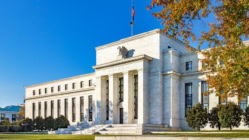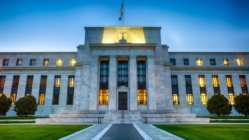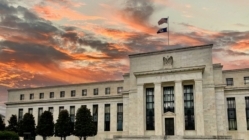The Fed held the Fed Funds Rate steady this month – which was no surprise.
The big surprise was that it announced that we’d see 3 rate cuts this year – even though or even if inflation remains hot, the economy remains strong, and the labor market remains robust.
Confusion alert: Why would the Fed have to cut or want to cut if the economy remains hot – and they engineered a beautiful soft landing (with no recession)?
Reason #1: The Fed sees storm clouds brewing.
I frequently mention all of the signs of an economic slowdown, including recessions overseas (Japan, UK, Germany, Australia), a budding commercial real estate crisis, a Chinese property market crisis, continually weak leading economic indicators, declining savings rates, credit card balances and defaults climbing, and rising layoff and unemployment numbers.
And, here’s a little secret: Fed Chair Powell is way smarter than I am. So, it is a certainty that Mr. Powell sees ALL of those same signs, so he thinks rate cuts will be necessary in response to an economic slowdown or even a crisis that that will soon be upon us. He just does not want to admit it – which leads to reason #2.
Reason #2: Defending the narrative.
Most of the Fed members are “Keynesians” who believe that the economy is largely driven by “narratives.” If businesses and consumers believe a recession is coming, they will stop investing and spending – and thus bring on the recession sooner and/or make the recession more severe. Conversely, if they believe our future is rosy, spending and investing will continue unabated.
This is true to some extent, and we’re seeing that play out now. But – narrative-driven spending only lasts for so long until reality sets in.
Will Rate Cuts Be Inflationary?
The WSJ reminded us in an editorial that rate cuts are inflationary, but Jeff Snider would disagree. Snider reminds us that rate cuts are not as impactful as everyone thinks (unless you’re in the mortgage industry 😊), and that the Fed usually cuts in response to recessions. And recessions are usually deflationary, as banks stop lending and laid-off employees stop spending. Note that we saw deflation after 2008 when the Fed cut rates significantly in response to the meltdown.
More Good News for Rates: The Fed Will Stop Selling Mortgage-Backed Securities
While hiking rates since 2022, the Fed has also been selling off its massive holdings of mortgage-backed securities (MBS). This increases the supply of MBS on the market, and that in turn pushes up mortgage rates. So, when the Fed stops selling off its supply (which they said they’d do this year), that will decrease supply and have the effect of bringing rates down further.
So, it looks like 2024 will finally bring some relief for a beleaguered mortgage industry and for borrowers who have been waiting to refinance. The consensus is that we will see the first cut by June.
























